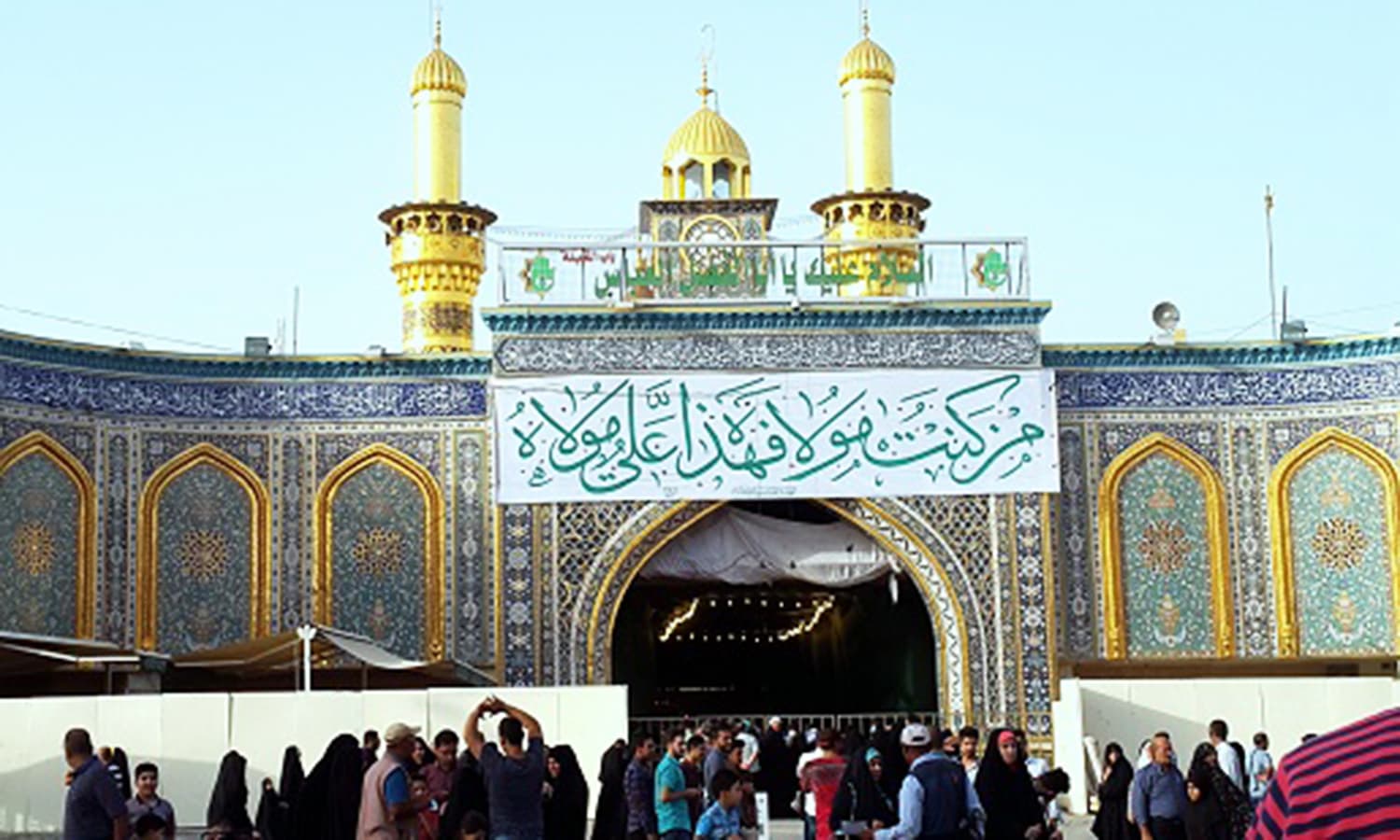Karbala: visiting the site of Islam's greatest tragedy
As I observed the roza of the Prophet Mohmmad's (PBUH) grandson Imam Hussain in Karbala, it seemed surreal that I was actually here.
People visiting the haram can do as they please – eat, sleep, walk, pray – as long as they respect the rules laid down by caretakers of the shrine, which are mainly for security reasons and keeping the area clean.
A common sight is people taking selfies with the shrine’s golden domes that provide the perfect backdrop.
You can also have your photograph taken by professionals who are usually seen scouting pilgrims.
On one side, groups of men recite nohas and do matam.
The atmosphere is peaceful, as everyone is involved in their own activities.
Children, indifferent to the sanctity of the place and the sombre mood, run around laughing and shrieking as they do. What's good is that nobody admonishes them for their behaviour.
There are separate toilets and ablution areas for men and women.
Drinking water is available everywhere.
While there are arrangements to give your shoes and valuables for safekeeping, lockers are placed along the shrine’s verandahs. They especially come in handy since cameras and phones are not allowed inside the shrines.
Donation boxes are placed inside the courtyard requesting charity for martyrs or soldiers who were wounded fighting ISIS.
You will experience a language barrier if you do not speak or understand Arabic as only few Iraqis understand English, but you don’t necessarily have to always converse to find your way around as directions to main landmarks are marked in English.
Outside the shrines, the main arteries are lined with restaurants, tea and juice stalls, and sweet shops. Inside the narrow alleys, shops sell goods from China, Turkey and India.
You can buy abayas, scarves, jainamaz, sajdagah, rosary, kaffan cloth, incense holders, framed photos and mugs of Imam Hussain, Hazrat Ali and Hazrat Abbas, as well as selfie-sticks.
Dustbins, placed every few feet, are routinely emptied. At night when the crowd gets thinner, the roads are washed.
The security is strict once you enter the cool interiors of the shrine. There is a separate curtained room which women have to pass through, while for men it's open. Women are frisked and their handbags are checked carefully. Lipstick, nail polish and other cosmetics are not allowed. Security also checks if women have their heads completely covered before going inside. If they find you wearing makeup, they provide you with wet tissues to wipe before you are allowed to enter the mosque and the shrine.
Once inside, everyone’s goal is to touch the zarih (the outer enclosure of Imam Hussain’s grave) in midst of the huge crowd. There's a lot of pushing and shoving, and there's a real chance of getting trampled, as people who were standing calmly next to you in the line outside suddenly lose it once inside the shrine. They do not care if they have jabbed their elbows into someone's rib, broken a toe nail, almost suffocated the person caught in between or pulled down or torn off someone's head gear. You need to have an escape plan when you find yourself plastered between people.
Despite all, the cool, airy interiors of the shrine are a welcome respite. The beautiful Persian carpets are clean despite the huge number of pilgrims visiting around the clock. Sajdahgahs are strewn about on the carpet and are stepped on by women although there are boxes kept for them to be placed. If you stay inside the shrine long enough, you'll see that the carpets are routinely vacuumed. The women's section is vacuumed by women while the public place is taken care of by men.
The walls of the shrine are lined with shelves with prayer books in Arabic and Persian. It would be wonderful if the caretakers would keep some English translations as well.
Karbala remains a deeply religious experience and vast majority of the pilgrims believe that it is an invitation by the Imam to visit Karbala and pay their respects.














